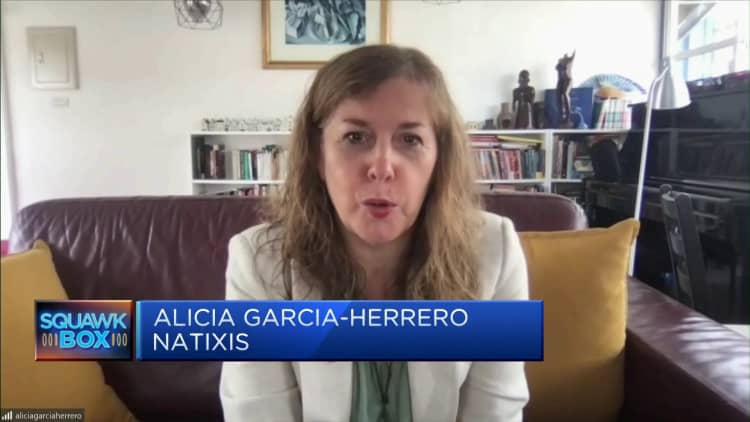The Hong Kong Monetary Authority (HKMA) bought HK$1.586 billion ($202 million) from the market on Thursday to stop the local currency weakening and breaking its peg to the U.S. dollar, the de-facto central bank's first intervention in 18 months.
The Hong Kong dollar is pegged to a tight band of between 7.75 and 7.85 versus the U.S. dollar. It has been softening as U.S. interest rates rise while a surfeit of cash in the local banking system keeps Hong Kong rates pinned down.
One-month U.S. dollar Libor, a benchmark lending rate, is around 0.8% — its highest since April 2020 — while the Hong Kong equivalent, one-month Hibor, is under 0.2% and barely above its Covid-19 pandemic lows.
HKMA's Chief Executive Eddie Yue said last week that as it intervenes and funds flow out of Hong Kong's system, local rates should rise, removing the incentive for market players to conduct "carry trades", and hence keep the Hong Kong dollar trading within its band.
"All these are normal operations in accordance with the design of the Linked Exchange Rate System," he said.
This arrangement was created in 1983 and has survived many crises over the years, including an attack from famed short-seller George Soros during the 1997-98 Asian financial crisis.
The HKMA last intervened in October 2020. That year it sold HK$383.5 billion worth to rein in the strengthening currency, according to HKMA data, while it last intervened at the weak end of the band in March 2019.

The aggregate balance — the key gauge of cash in the banking system — will decrease to HK$336.005 billion on May 13, an HKMA spokeswoman said on Thursday.
It dropped to around HK$50 billion in 2019 after the last series of HKMA interventions to stop the currency weakening.
In 2020 it surged to more than HK$450 billion as capital rushed into Hong Kong, drawn by higher interest rates locally than in the U.S. and a series of large initial public offerings.

